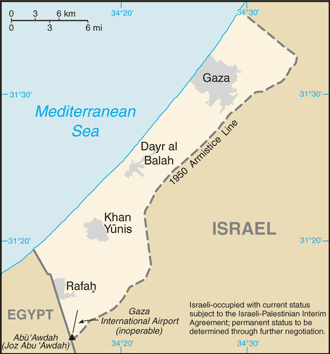I spent the day trying to resurrect my sustainability paper from the far corners of my brain since it’s stuck on my old computer’s hard-drive. I’m speaking on Sunday at a Green Architecture conference in Gaza.
Thinking about the future challenges in Gaza, it doesn’t seem at all fair that climate change must be on that list too.
It’s not a pretty picture. Almost seems like a perfect storm.
- the aquifer beneath Gaza will likely be unusable by 2016 and the damage to it irreversible by 2020.
- the population will swell from 1.64 million today to 2.13 million by 2020 and 2.76 million by 2028.
- the current demand for electricity cannot be met, requiring daily blackouts, but in 8 years the demand is expected to double.
- the climate change impacts are already being felt.
- the 65-year-long occupation and the 5-year siege are already devastating.
- and the list goes on and on.
In the Mediterranean, “NOAA reports that global warming is harming humans right now in a dramatic way: Wintertime droughts are increasingly common in the Mediterranean region, and human-caused climate change is partly responsible, according to a new analysis by NOAA scientists and colleagues at the Cooperative Institute for Research in Environmental Sciences (CIRES). In the last 20 years, 10 of the driest 12 winters have taken place in the lands surrounding the Mediterranean Sea.
The 2010 National Center for Atmospheric Research notes “By the end of the century, many populated areas, including parts of the United States, could face readings in the range of -8 to -10, and much of the Mediterranean could fall to -15 to -20. Such readings would be almost unprecedented.”
Indeed, the new NOAA study should be especially sobering to those in the Mediterranean since they clearly face some of the most extreme drying in the entire world.
The Mediterranean has long been identified as a “hot spot” for substantial impact from climate change in the latter decades of this century because of water scarcity in the region, a rapidly increasing population, and climate modeling that projects increased risk of drought.
“The question has been whether this projected drying has already begun to occur in winter, the most important season for water resources,” Hoerling said. “The answer is yes.”



To bad they don’t seem to know anything about population control and/or birth control in that area of the world. We have to try to stop the population explosion